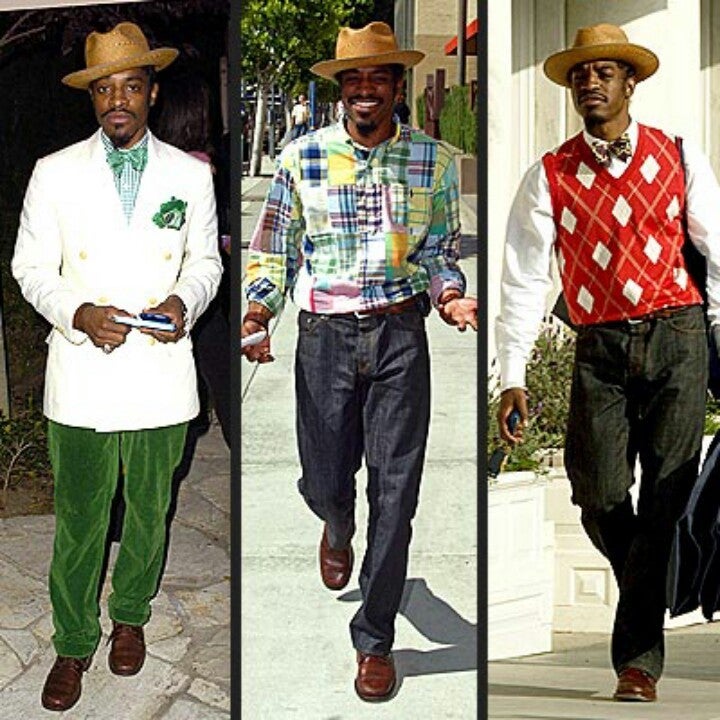The sweater vest was robbed. What has always been an ingenious, polished way to keep your core warm and your limbs free has been unfairly associated with old men, golfers, high school teachers and nerds, cementing its status as something only worn by men who’ve given up or probably should. Regardless, The New York Times has just declared sweater vests are back — “Just don’t tell grandpa,” they joke. Doubling down on that assertion, the editorial spread features scrawny young men mostly under 20 wearing $800 sweater vests.
“To the delight of grandfathers and dorky librarians everywhere, the fuddy-duddy sweater vest has shed its uncool reputation,” they write. “In several standout collections for this coming spring season, designers subverted the sleeveless knit with puckish attitude and provocative styling.”
Style blogs are also crying out: “Yes, you can wear a sweater vest.” But don’t fall for this semantic, or sartorial, trick. Like nearly all fashion, there is no such thing as a good or bad item — after all, someone somewhere makes a fanny pack look cool. Furthermore, you don’t need permission to wear a sweater vest, because the sweater vest never needed to be subverted. The sweater vest was always cool. It was just misunderstood, because the wrong people have been wearing it badly. That’s not our problem.
It’s true it’s had some strange associations, which include athletic, preppy, professorial, and presidential. According to a history of the much-maligned garment at Slate by Julia Felsenthal, sweater vests can be traced back to rowers in 1882, who wore them to encourage sweating and weight loss. The sleeves were chopped off in 1907 when Michigan football players donned sweater vests instead of sweaters with monogrammed Ms as part of a uniform. Woodrow Wilson wore one to do some Christmasy White House stuff in 1913. Then Herbert Hoover shows up in one on a fishing trip in 1928. They were standard menswear by the 1930s, and even Eleanor Roosevelt wore one with tweeds in 1934.
In every decade, the sweater vest found its man, for better or worse. The 1950s man wore a sweater vest to polish his look. The 1970s man fearlessly embraced the badly patterned, far-out wackadoodle sweaters vests of the era (some, unfortunately, featured belts). And over the ensuing several decades, they’ve been pulled overhead by golfers, grandpas, grandpa golfers, businessmen and hipsters.
It’s true that most of us aren’t channeling athletic coaches or joker politicians in our personal style. Ohio State football coach Jim Tressel wears a trademark red sweater vest. (A fan even has it tattooed on her ass.) And then there is the mysterious case of Rick Santorum. In 2012, Santorum donned a solid navy blue sweater vest that was such a noteworthy choice that it even spawned its own Twitter account. Felsenthal’s Slate piece on the history of the sweater vest asked what it all meant. The verdict: That he’s a sad schlub. Felsenthal writes:
Scarlett Johansson, who just declared the vest “so sad,” associates the look with her father. Griffin Perry, son of Rick Perry, tweeted that the vest reminded him of infamous sweater-vest-wearing football coach Jim Tressel. The Hartford Courant declared, perhaps prematurely, that Santorum had single-handedly transitioned the sweater vest from a neutral political status to a “right-wing vestment.” The New York Times positions the vest as grandfatherly; the LA Times prefers “avuncular.” Meanwhile, the Boston Herald went out on a limb and accused Santorum of “looking like a McDonald’s trainee.”
Of course, such burns are actually more political than aesthetic. Santorum is a homophobic douche whose surname is now synonymous with the frothy semen/fecal matter byproduct of anal sex; dude would make a motorcycle jacket look lame. His co-opt should not sully our fond associations.
I still associate them with ‘80s preppy chic of my childhood. Ralph Lauren’s ubiquitous sweater vest with the polo logo was a mainstay of menswear — outfitted over an Oxford shirt rolled up to expose the forearms, Dockers and Sebagos. Ralph Lauren’s online style guide still pitches this look as a smart way to mix patterns in response to a reader question on how to do this effectively by pairing a Fair Isle vest sweater with a white oxford.
And that image belongs entirely to one man: dreamboat boyfriend Jake Ryan in Sixteen Candles.

RL refers to looks such as these as “smart casual,” but I consider it “casual elegant,” and at least some of my female friends agree with me. In discussing the appeal of sweater vests with them, one wrote astutely, “I think they look good on everyone, regardless of gender or size. They take you from “Schlub wearing one shirt” to “Look at Dr. Professor.”
They tie together the look, smooth out the silhouette and polish the angles. We deduced that ultimately, adding a sweater vest means adding a layer, and when men add layers it means they’ve made an effort, and effort is good. “Layers indicate men trying,” one friend said. “And that’s good for everyone.”
I contend that they are an excellent male accessory that, much like a hat, or more like glasses, also make any man look not just more considered, but generally smarter in the collegiate sense. But I understand the sweater vest’s hopelessly uncool reputation. Anecdotally, I’ve never been able to convince any man that sweater vests are worthy and good, so I polled some men on Facebook to see what their beef is. I got a few responses. One man said “Love ‘em,” and later added, “arms so free.” Another said he was not a fan. Another said he hadn’t thought about the sweater vest in a decade, but he “definitely remembers calling Vampire Weekend sweater vest rock.” (For what it’s worth, I can find many pictures of the band Vampire Weekend in sweaters and cardigans, but no sweater vests.)
Another said, “The purpose of a sweater vest eludes me. Heat up that torso and keep the extremities cold? Obviously not a utilitarian design, which means it’s a style statement, which… why?” (I would counter that the sleeveless puffer jacket presents the exact same dilemma with less style and no one seems to have any problem with that.)
There’s also the fact that today’s younger man, born and raised in the 1990s, is, when it comes to the sweater vest, likely blaming Urkel for this:

But in truth, lots of very attractive and well-dressed men have been quietly wearing sweater vests far away from the nerd crosshairs. It’s a unique item in fashion because it’s only occupied by the extreme ends of the spectrum: the totally fashionable man, or the totally unfashionable one.
Here is Paul McCartney in a sweater vest, okay?

Here’s Sam Neill in a sweater vest — okay?

Okay — here is Ryan Reynolds in a sweater vest:

Here is Clint Motherfucking Eastwood in a sweater vest, all right?

The sweater vest-averse man in the middle has anxiety that is valid but misplaced. Style guides for men don’t help by positioning it as a daunting fashion choice one must be bold to attempt, when in reality it’s the most straightforward item a man can put on (after a shirt and pants). In 2011, Men’s Health advised men on how to “rock” a sweater vest by focusing on logistics — make sure it fits, is age-appropriate, and the fabric matches the occasion.
Last year in the Wall Street Journal, Michael B. Dougherty explored how to pull one off without looking like Urkel by explaining that most sweater vests are simply ugly. “Worse, sleeveless sweaters have been tainted by unfortunate associations,” he writes. “From your junior-high science teacher to the taunted nerds of TV’s teen comedies, sweater vests, with their baggy silhouettes and argyle prints, telegraph schlubbiness.”
That may be. But one of his sources rightly points out that it’s not the vest that’s bad, it’s how it’s worn. Here is Andre 3000 in a sweater vest, okay?

If Andre 3000 wears a sweater vest, he argues, you’re probably going to think it’s dope.
Correct.

